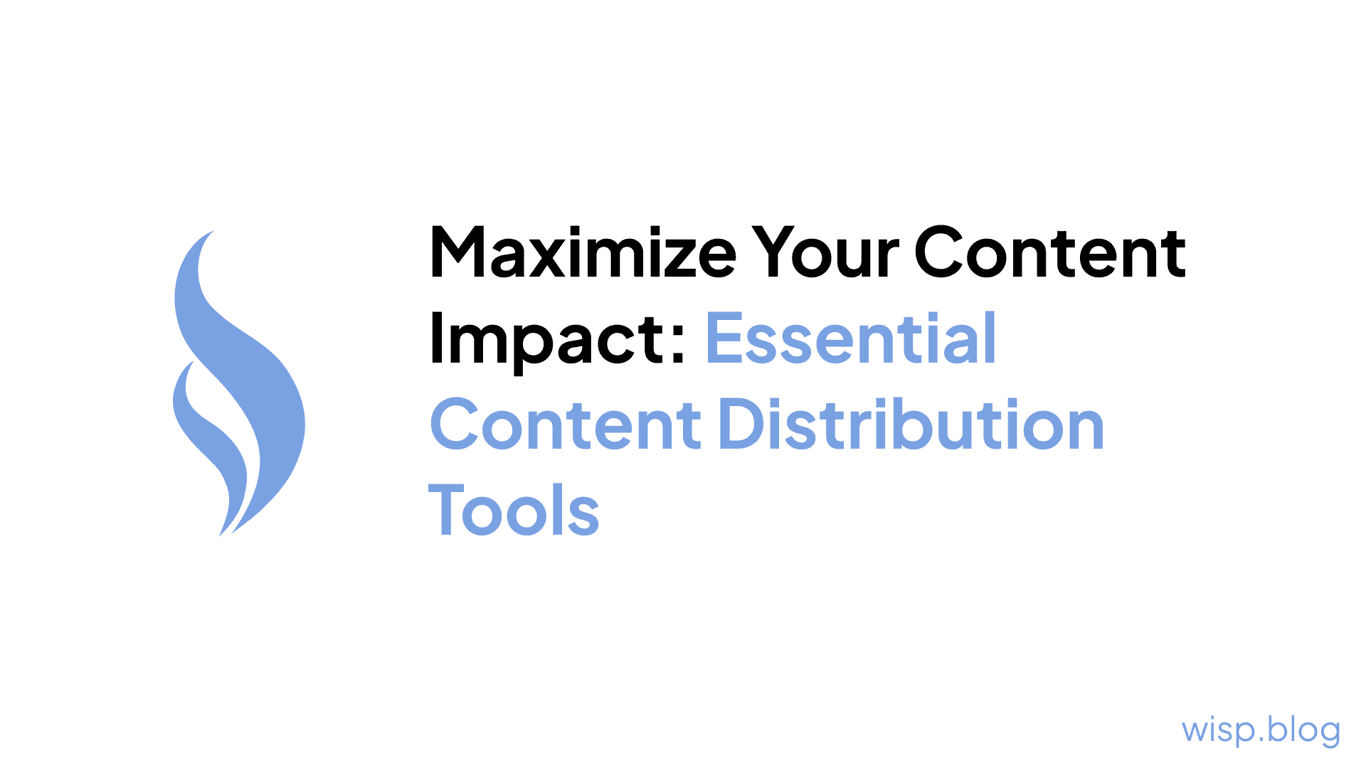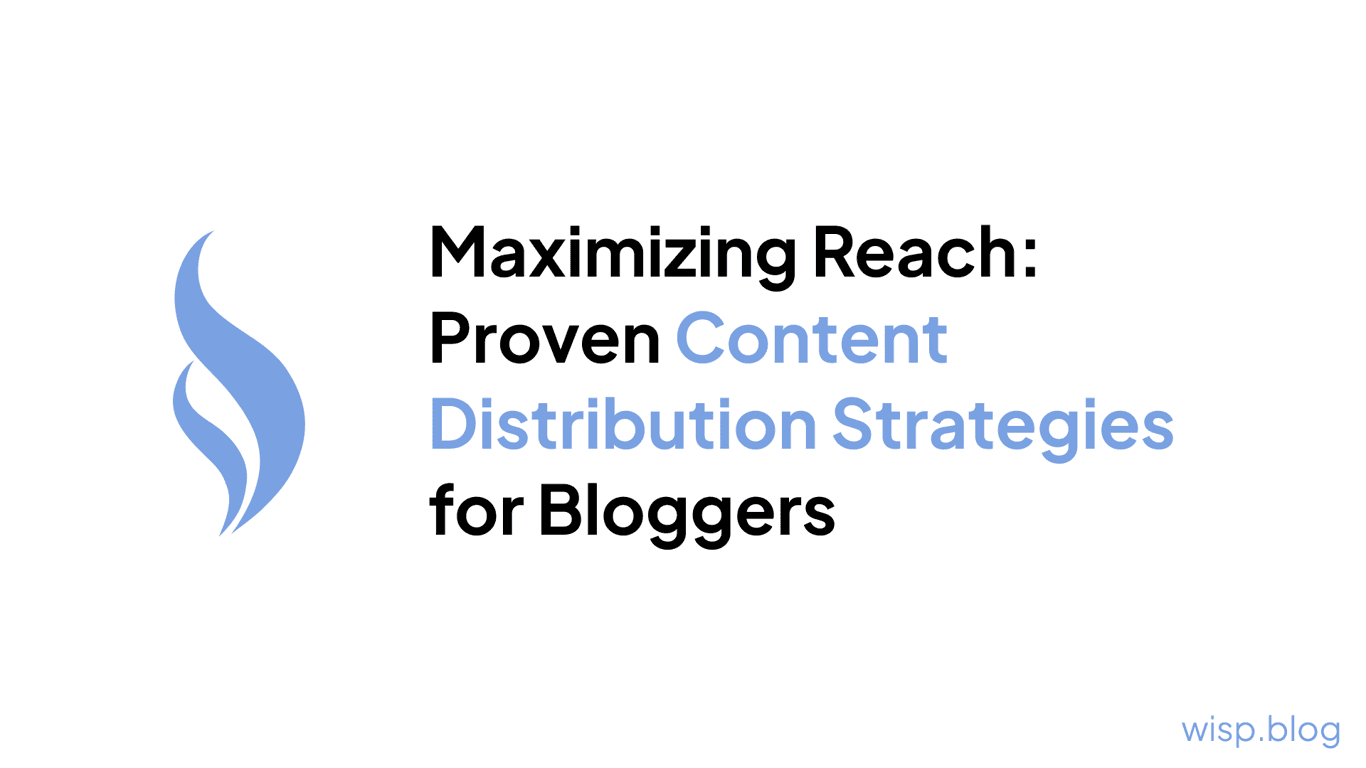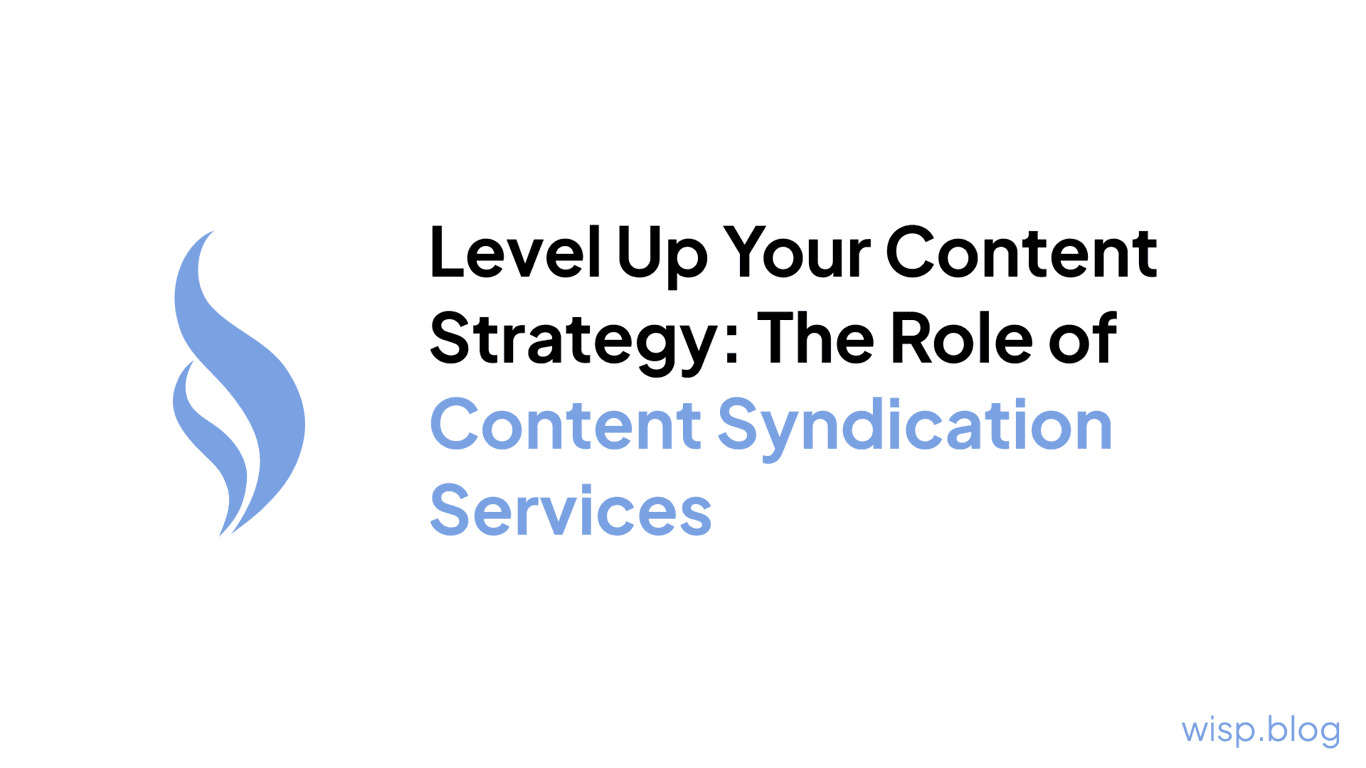
Importance of Content Distribution
In the world of content marketing, creating valuable and engaging content is just the first step. To truly maximize the impact of your content and reach a wider audience, an effective content distribution strategy is essential. By leveraging various content distribution channels, you can ensure that your content is seen by the right people, at the right time, and in the right places.
Maximizing the Impact of Your Content
No matter how exceptional your content is, it won't make a significant impact if it remains hidden and undiscovered. Content distribution plays a crucial role in increasing the visibility and reach of your content. By strategically distributing your content, you can amplify its impact and drive more traffic to your website or blog.
Effective content distribution allows you to:
Reach a broader audience: By utilizing different distribution channels, you can extend your reach beyond your existing audience and tap into new demographics and markets.
Increase brand awareness: Distributing your content across various platforms and channels helps to build brand recognition and increase awareness of your business.
Enhance SEO efforts: Content distribution, particularly through channels like search engine optimization (SEO), can improve your website's visibility in search engine results, driving organic traffic to your content.
Generate targeted traffic: By distributing your content through channels that align with your target audience's interests and preferences, you can attract relevant and engaged visitors to your website.
Leveraging Content Distribution Channels
To effectively distribute your content, it's crucial to leverage a mix of distribution channels that align with your target audience and marketing goals. Here are some key content distribution channels to consider:
Distribution Channel | Description |
|---|---|
Search Engine Optimization (SEO) | Optimizing your content for search engines to improve organic visibility. Learn more about content distribution networks and content syndication services. |
Social Media Platforms | Sharing your content on popular social media platforms to reach a wide audience and encourage engagement and sharing. |
Email Marketing | Leveraging your email list to distribute content directly to subscribers, nurturing relationships, and driving traffic to your website. |
Pay-Per-Click (PPC) Advertising | Using paid advertising to promote your content on search engines and other platforms, targeting specific keywords and demographics. |
Social Media Advertising | Promoting your content through targeted ads on social media platforms to reach a specific audience. |
Influencer Partnerships | Collaborating with influencers or industry experts to distribute your content to their followers and tap into their established networks. |
Guest Blogging | Writing and publishing articles on other relevant blogs or websites to expand your reach and establish yourself as an authority in your industry. |
Cross-Promotion with Other Brands | Partnering with complementary brands to cross-promote each other's content, expanding your reach and tapping into new audiences. |
By utilizing a combination of these content distribution channels, you can effectively amplify the reach and impact of your content. A well-executed content distribution strategy is essential for driving traffic, increasing brand visibility, and ultimately achieving your content marketing goals. Explore our article on content distribution tools to discover valuable resources that can help streamline your content distribution efforts.
Organic Distribution Channels
When it comes to content distribution, organic channels play a crucial role in reaching and engaging your target audience. These channels rely on natural methods to distribute your content without paid promotion. Let's explore three effective organic distribution channels: search engine optimization (SEO), social media platforms, and email marketing.
Search Engine Optimization (SEO)
Search engine optimization (SEO) is a fundamental strategy for improving the visibility and ranking of your content in search engine results pages (SERPs). By optimizing your content with relevant keywords, meta tags, and high-quality backlinks, you can increase your chances of appearing in organic search results.
Effective SEO requires thorough keyword research to identify the terms and phrases your target audience is searching for. By incorporating these keywords strategically into your content, you can improve your website's ranking and attract organic traffic. It's also important to optimize your website's technical aspects, such as site speed, mobile-friendliness, and user experience, to enhance its overall SEO performance.
To learn more about SEO and how to optimize your content for search engines, check out our article on SEO Strategies Every Blogger Should Know.
Social Media Platforms
Social media platforms offer a powerful avenue for distributing your content and engaging with your audience. By creating compelling and shareable content, you can leverage social media to generate organic reach and drive traffic to your website.
Each social media platform has its own unique features and audience demographics, so it's important to tailor your content accordingly. Utilize engaging visuals, compelling captions, and relevant hashtags to increase the discoverability of your content. Encourage your followers to share, comment, and interact with your posts to extend your reach organically.
To effectively manage your social media presence and streamline content distribution, consider using social media scheduling tools. These tools allow you to plan and automate your social media posts, ensuring consistent and timely content delivery.
Email Marketing
Email marketing remains a highly effective and personal way to distribute your content directly to your audience's inbox. By building an email list of subscribers who have opted in to receive updates from you, you can nurture these relationships and share your content with them.
Craft engaging and informative newsletters that provide value to your subscribers. Include snippets of your content along with compelling subject lines to entice them to click through to your website. Personalize your emails and segment your audience to ensure that your content resonates with their specific interests and needs.
To effectively manage and automate your email marketing campaigns, consider utilizing email marketing platforms. These platforms offer features such as email templates, automation, and analytics to help you optimize your email distribution efforts. For more information about content distribution tools and services, take a look at our article on content distribution tools.
By leveraging organic distribution channels like SEO, social media platforms, and email marketing, you can expand your reach and effectively distribute your content to your target audience. Remember to consistently analyze the performance of your distribution efforts and make adjustments as needed to maximize your content's impact.
Paid Distribution Channels
To maximize the reach and visibility of your content, utilizing paid distribution channels can be an effective strategy. These channels provide opportunities to target specific audiences and generate traffic to your content. In this section, we will explore three popular paid distribution channels: pay-per-click (PPC) advertising, social media advertising, and influencer partnerships.
Pay-Per-Click (PPC) Advertising
Pay-per-click (PPC) advertising allows you to place targeted ads on search engines and websites, paying only when someone clicks on your ad. This form of advertising can be highly effective in driving traffic to your content as it allows you to appear prominently in search engine results and on relevant websites.
One of the advantages of PPC advertising is the ability to precisely target your audience based on factors such as demographics, interests, and search intent. This level of targeting ensures that your content is seen by the right people, increasing the chances of engagement and conversions.
To get started with PPC advertising, it's important to conduct keyword research to identify the most relevant and valuable keywords for your content. By bidding on these keywords, you can increase your chances of appearing in search results. Additionally, crafting compelling ad copy and utilizing ad extensions can help improve the click-through rate of your ads.
Social Media Advertising
Social media platforms offer robust advertising options to help you distribute your content to a wider audience. With advanced targeting capabilities and extensive user data, social media advertising allows you to reach specific demographics, interests, and behaviors.
Each social media platform has its own advertising features and formats, such as sponsored posts, carousel ads, and video ads. By leveraging these options, you can showcase your content directly to your target audience in their social media feeds.
When creating social media ads, it's important to tailor your messaging and visuals to suit the platform and audience. Utilize eye-catching visuals, compelling copy, and relevant hashtags to increase engagement and drive traffic to your content. Monitoring the performance of your ads and making data-driven optimizations can help improve their effectiveness over time.
Influencer Partnerships
Partnering with influencers can provide a powerful boost to your content distribution efforts. Influencers have established credibility and a dedicated following, making their recommendations and endorsements highly impactful. Collaborating with influencers allows you to tap into their audience and leverage their influence to promote your content.
When selecting influencers, it's important to consider their relevance to your target audience and the alignment of their values with your brand. Look for influencers who have an engaged and authentic following, as this can increase the likelihood of their audience engaging with your content.
Influencer partnerships can take various forms, including sponsored posts, guest appearances on their platforms, or collaborations on content creation. By working closely with influencers, you can create compelling content that resonates with their audience and drives traffic back to your own channels.
Paid distribution channels like PPC advertising, social media advertising, and influencer partnerships can significantly expand the reach of your content. By investing in targeted promotional efforts, you can ensure that your content reaches the right audience, increases brand awareness, and drives traffic to your website or blog.
Collaborative Distribution Channels
Collaborating with others can be a powerful way to expand your content's reach and connect with new audiences. By leveraging collaborative distribution channels, you can tap into existing networks and gain exposure to a wider audience. Two effective collaborative distribution channels are guest blogging and cross-promotion with other brands.
Guest Blogging
Guest blogging involves writing and publishing content on someone else's blog or website. This collaborative approach allows you to showcase your expertise, reach a new audience, and build relationships with other industry influencers or thought leaders. When guest blogging, it's important to choose blogs that align with your target audience and have a strong online presence.
By contributing valuable and engaging content as a guest blogger, you can establish yourself as an authority in your field and attract new readers to your own blog. It's also an opportunity to include a bio or byline that links back to your website, creating a valuable backlink that can improve your website's search engine optimization (SEO) performance.
When selecting guest blogging opportunities, consider the relevance of the blog's audience to your own target audience. Look for blogs that have a strong readership and engagement, as this will increase the visibility and impact of your guest posts. Don't forget to include internal links to related articles on your own blog to encourage readers to explore more of your content.
Cross-Promotion with Other Brands
Cross-promotion involves partnering with complementary brands to promote each other's content or products. This collaborative approach allows you to tap into the existing audience of a brand that shares a similar target audience but is not a direct competitor. By cross-promoting, you can reach a new audience that may have a genuine interest in your content.
When exploring cross-promotion opportunities, look for brands that align with your values, target audience, and content themes. This collaboration can take various forms, such as co-creating content, sharing each other's content on social media, or featuring each other in newsletters or email campaigns.
Cross-promotion can be mutually beneficial, as it allows both brands to leverage each other's reach and build brand awareness. When cross-promoting, it's important to maintain authenticity and ensure that the content or products being promoted genuinely add value to the audience. This approach helps to establish trust and credibility among the shared audience.
By leveraging collaborative distribution channels like guest blogging and cross-promotion with other brands, you can expand your content's reach, tap into new audiences, and build meaningful relationships within your industry. These channels, alongside other organic and paid distribution strategies, can work synergistically to maximize the impact of your content and drive traffic to your blog or website.
Emerging Trends in Content Distribution
As the digital landscape continues to evolve, new trends in content distribution are constantly emerging. Staying up-to-date with these trends is essential for content marketers looking to expand their reach and engage with their target audience. In this section, we will explore three emerging trends in content distribution: video content distribution, podcast distribution, and interactive content distribution.
Video Content Distribution
Video has become a powerful medium for content distribution, capturing the attention of audiences and conveying information in a visually engaging way. Platforms like YouTube, Vimeo, and social media channels have provided content creators with the opportunity to reach a vast audience through video content.
One of the key advantages of video content distribution is its ability to evoke emotions and tell stories effectively. Whether it's through tutorials, product demonstrations, or storytelling, videos have the potential to create a lasting impact on viewers. Moreover, videos can be easily shared and embedded on websites, blogs, and social media platforms, amplifying their reach.
When distributing video content, it's important to optimize it for search engines by using relevant keywords, writing compelling descriptions, and adding appropriate tags. Additionally, promoting videos through social media platforms and collaborating with influencers can help increase visibility and reach. To learn more about content distribution strategies, check out our article on content distribution strategies.
Podcast Distribution
Podcasts have gained immense popularity in recent years, offering a convenient and immersive way for audiences to consume content. With the rise of platforms like Spotify, Apple Podcasts, and Google Podcasts, podcast distribution has become an effective channel for reaching and engaging with a dedicated listener base.
Podcasts allow content creators to delve deeper into topics, share insights, and have meaningful conversations with guests. They provide a unique opportunity to connect with the audience on a personal level and build a loyal following. Additionally, podcasts can be repurposed and transcribed into blog posts or social media content, extending their reach and providing additional value.
To effectively distribute podcasts, it's important to optimize them for search engines by using relevant keywords in titles and descriptions. Promoting podcasts through social media channels and collaborating with other podcasters or influencers in the industry can also help expand the listener base. For more information on content distribution tools and services, refer to our article on content distribution tools.
Interactive Content Distribution
Interactive content, such as quizzes, polls, and interactive infographics, is gaining traction as a powerful content distribution method. This type of content engages users by encouraging active participation and providing an immersive experience. Interactive content can be distributed through websites, blogs, social media platforms, and email marketing campaigns.
Interactive content distribution allows users to interact with the content, providing valuable insights and data for content creators. It enhances user engagement and encourages social sharing, which can lead to increased visibility and traffic. By offering personalized experiences and catering to the preferences of the target audience, interactive content can be a highly effective tool for content distribution.
When creating and distributing interactive content, it's important to ensure compatibility across different devices and platforms. Optimizing the content for search engines and incorporating social sharing buttons can also help increase its reach. To explore content distribution options beyond traditional channels, consider utilizing content distribution networks and syndication services. Learn more about these options in our articles on content distribution networks and content syndication services.
By embracing these emerging trends in content distribution, content marketers can open new avenues for engaging with their target audience and expanding their reach. Incorporating video, podcasts, and interactive content into their distribution strategies can help create a diverse and engaging content ecosystem that resonates with their audience.


